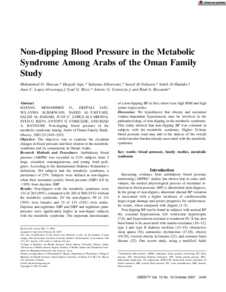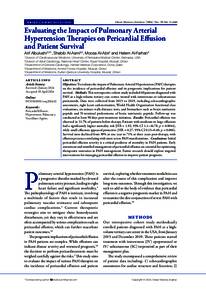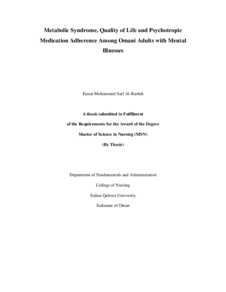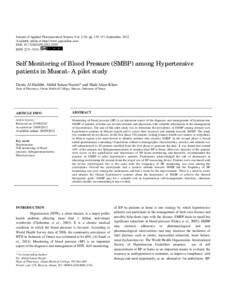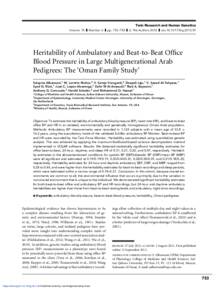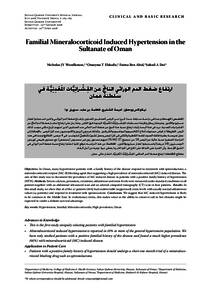Document
Non-dipping blood pressure in the metabolic syndrome among Arabs of the Oman family study.
Identifier
DOI: 10.1038/oby.2007.290
Source
Obesity. v. 15, 10, p. 2445-2453
Contributors
Jaju, Deepali., Author
Al-Barwaniyah, Sulayma., Author
Al-Yahyaee, Saeed., Author
Al-Hadabi, Saleh., Author
Lopez-Alvarenga, Juan C., Author
Rizvi, Syed G., Author
Comuzzie, Antony G., Author
Bayoumi, Riad A., Author
Country
United States.
City
Canada
Publisher
NAASO.
Gregorian
2007-10-01
Language
English
English abstract
Objective: The objective was to examine the circadian changes in blood pressure and their relation to the metabolic syndrome and its components in Omani Arabs. Research Methods and Procedures: Ambulatory blood pressure (ABPM) was recorded in 1124 subjects from 5 large, extended, consanguineous, and young Arab pedigrees. According to the International Diabetes Federation's definition, 264 subjects had the metabolic syndrome, a prevalence of 23%. Subjects were defined as non-dippers when their nocturnal systolic blood pressure (SBP) fell by 10% from daytime SBP. Results: Non-dippers with the metabolic syndrome were 131 of 264 (50%), compared with 265 of 860 (31%) without the metabolic syndrome. Of the non-dippers, 99 of 131 (76%) were females and 32 of 131 (24%) were males. Daytime and nighttime SBP and DBP and nighttime pulse pressure were significantly higher in non-dipper subjects with the metabolic syndrome. The important determinants of a non-dipping BP in this cohort were high BMI and high serum triglycerides. Discussion: We hypothesize that obesity and nocturnal volume-dependent hypertension may be involved in the pathophysiology of non-dipping in the metabolic syndrome. This study showed that non-dipping BP was common in subjects with the metabolic syndrome. Higher 24-hour blood pressure load may add to the indices of the overall cardiovascular burden already associated with the metabolic syndrome.
ISSN
1930-7381
Resource URL
Category
Journal articles

